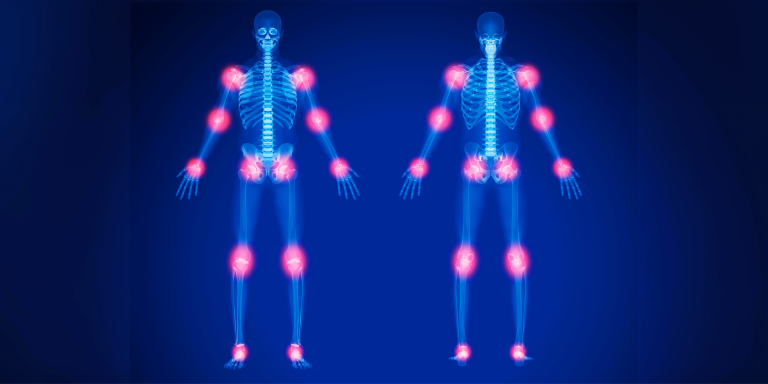
The Link Between Gum Disease and Rheumatoid Arthritis
The Link Between Gum Disease and Rheumatoid Arthritis: What You Need to Know
When we think about gum disease and rheumatoid arthritis (RA), they often seem like unrelated conditions affecting different parts of the body. However, recent research highlights a surprising connection between these two chronic diseases. Understanding this link is crucial for both arthritis sufferers and the general public, as it emphasizes the importance of oral health in managing overall wellness.
What Are Gum Disease and Rheumatoid Arthritis?
Gum Disease
Gum disease, also known as periodontal disease, is a common condition characterized by inflammation of the gums. It starts as gingivitis, which includes symptoms such as red or puffy gums and bleeding during brushing or flossing. If left untreated, it can progress to periodontitis, where the gums pull away from the teeth, leading to tooth sensitivity, bad breath, loose teeth, and other severe dental issues.
Rheumatoid Arthritis
Rheumatoid arthritis is an autoimmune disorder that primarily affects the joints, causing pain, swelling, and stiffness. Unlike osteoarthritis, which results from wear and tear, RA occurs when the immune system mistakenly attacks the body’s tissues, including the joint lining. This leads to chronic inflammation and can result in joint damage and deformities over time.
The Connection: Scientific Studies and Research
Recent studies reveal that individuals with RA are twice as likely to suffer from gum disease compared to those without it. Approximately 65% of people with RA also have gum disease, while only 28% of people without RA experience it. This significant overlap suggests a deeper connection between the two conditions.
One of the key bacteria involved in this connection is Porphyromonas gingivalis (P. gingivalis), commonly found in periodontal disease. This bacterium can trigger autoantibodies that not only attack the gums but also the joint linings, potentially leading to RA. Research indicates that P. gingivalis contains an enzyme that alters proteins in the body, prompting the immune system to create antibodies against these proteins in the joints.
Further studies show that bacteria from the mouth can travel to the fluid between joints in people with RA. This movement suggests that the presence of periodontal bacteria may exacerbate or even initiate the inflammatory processes seen in RA.
Shared Risk Factors
Both gum disease and RA share several risk factors, making the coexistence of these conditions more likely. These include:
Genetics
Genetic predisposition plays a significant role in both conditions. Specific genetic markers, such as certain types of HLA (human leukocyte antigen) genes, have been linked to increased susceptibility to both periodontal disease and RA.
Lifestyle Factors
Smoking is a notable risk factor that significantly worsens both conditions. Quitting smoking can lead to improvements in gum health and a reduction in RA severity. Additionally, poor oral hygiene and a diet high in sugar and low in essential nutrients can contribute to the development of gum disease and exacerbate RA symptoms.
Impact of Gum Disease on Rheumatoid Arthritis
The relationship between gum disease and RA is bidirectional, meaning that each condition can influence the severity and progression of the other. For instance, untreated gum disease can exacerbate RA symptoms, leading to higher disease activity scores and more severe joint inflammation.
Long-term gum inflammation can also affect the effectiveness of RA medications, making it harder to manage the disease. Therefore, maintaining good oral health is not just about preventing dental issues but also about managing arthritis symptoms more effectively.
Practical Tips for Prevention and Management
Given the strong connection between gum disease and RA, here are some practical tips for preventing and managing both conditions:
Maintain Good Oral Hygiene
- Brush Twice a Day: Use fluoride toothpaste and brush your teeth at least twice daily.
- Clean Between Teeth: Use dental floss or interdental brushes to clean between your teeth once a day.
- Use Mouthwash: An antimicrobial mouthwash can help reduce bacteria in the mouth.
Regular Dental Check-Ups
- Visit Your Dentist: Regular dental visits are crucial for early detection and treatment of gum disease.
- Professional Cleanings: Ensure you get professional dental cleanings to remove plaque and tartar buildup.
Healthy Lifestyle Choices
- Quit Smoking: Smoking significantly worsens both gum disease and RA. Seek support to quit smoking.
- Balanced Diet: Eat a balanced diet rich in vitamins and minerals to support overall health.
- Stay Hydrated: Drinking plenty of water helps maintain saliva flow, which is essential for oral health.
Monitor and Manage RA Symptoms
- Medication Adherence: Take RA medications as prescribed by your healthcare provider.
- Regular Exercise: Engage in low-impact exercises to keep your joints flexible and strong.
- Stress Management: Practice stress-reducing activities, such as yoga or meditation, to manage chronic inflammation.
By understanding and addressing the connection between gum disease and rheumatoid arthritis, you can take proactive steps to improve your overall health and well-being.



Post a comment